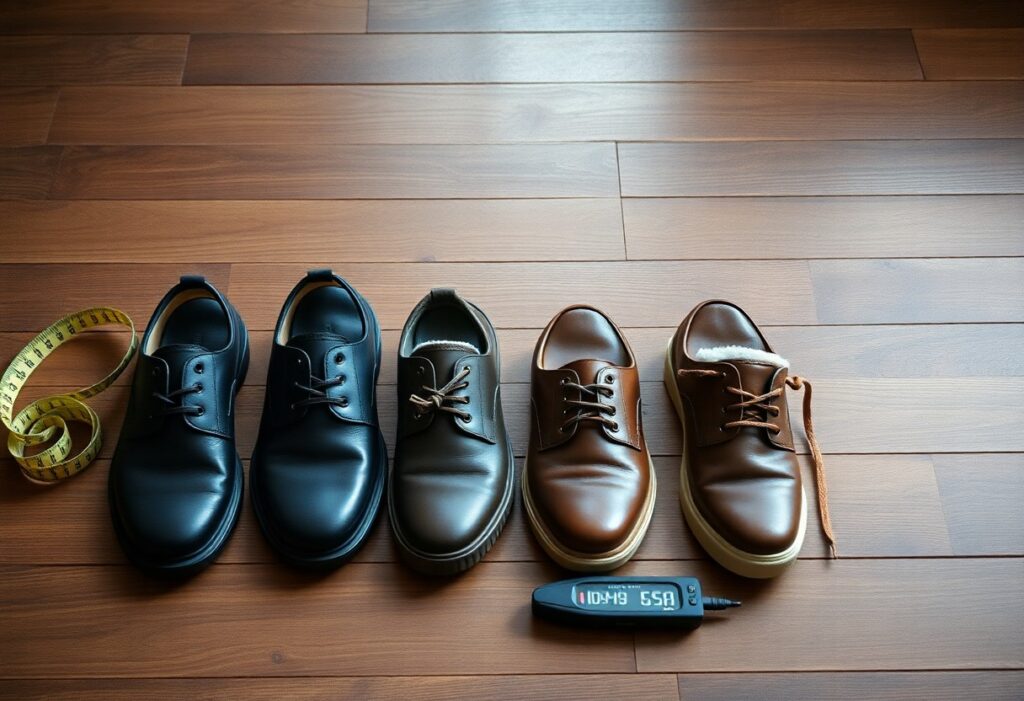
Selecting shoes with the appropriate width is essential for maintaining optimal foot health and ensuring your comfort. Footwear that fits well can significantly alleviate foot pain and reduce the risk of various health issues associated with poorly fitting shoes. When shopping for shoes, it’s crucial to assess both the length and width to achieve the perfect fit. Choosing shoes with the right width not only enhances your stability and improves blood circulation but also substantially decreases the likelihood of blisters and other common foot problems. To find your ideal shoe width, measure the widest part of your foot and consult standardized width charts. Many shoppers mistakenly concentrate solely on shoe length, neglecting the fact that adequate width is just as vital for daily comfort and overall foot well-being.
Accurate Foot Measurement Techniques for Selecting the Right Shoe Width
The optimal time to measure your foot width is in the evening, as feet tend to swell throughout the day. This natural swelling can result in width differences of up to half an inch, making evening measurements the most reliable for determining your fit. To measure accurately, stand on a sheet of paper and trace around your foot, ensuring you capture the fullest dimensions. This simple yet effective process will help you find shoes that not only fit comfortably but also provide the necessary support your feet need for everyday activities, enhancing overall foot health and comfort.
Proven Methods for Measuring Foot Width Accurately
In addition to using a standard ruler, consider utilizing the Brannock Device, a specialized measuring tool available in most shoe stores, which provides precise measurements for foot size. This device allows you to measure the widest part of your foot, typically across the ball area. For the best accuracy, measure both feet while standing, as it’s common for one foot to be slightly larger than the other. This practice ensures you select shoes that accommodate the larger foot, greatly reducing the chance of discomfort during wear and promoting better foot health.
Avoiding Common Mistakes When Choosing Shoe Width
A frequent error in selecting shoe width is neglecting the significance of accurate width measurements. Many individuals concentrate solely on the shoe length, which can lead to substantial discomfort and a variety of potential foot problems. Common mistakes include measuring feet while seated or assuming that foot width remains unchanged over time. It’s crucial to recognize that wearing shoes that are too narrow can lead to serious foot conditions, including bunions, corns, and hammertoes. Foot size can fluctuate due to various factors such as weight changes, pregnancy, or aging, making annual measurements advisable. Choosing the right width is vital for preventing blisters, calluses, and persistent foot pain, ensuring your footwear supports your health.
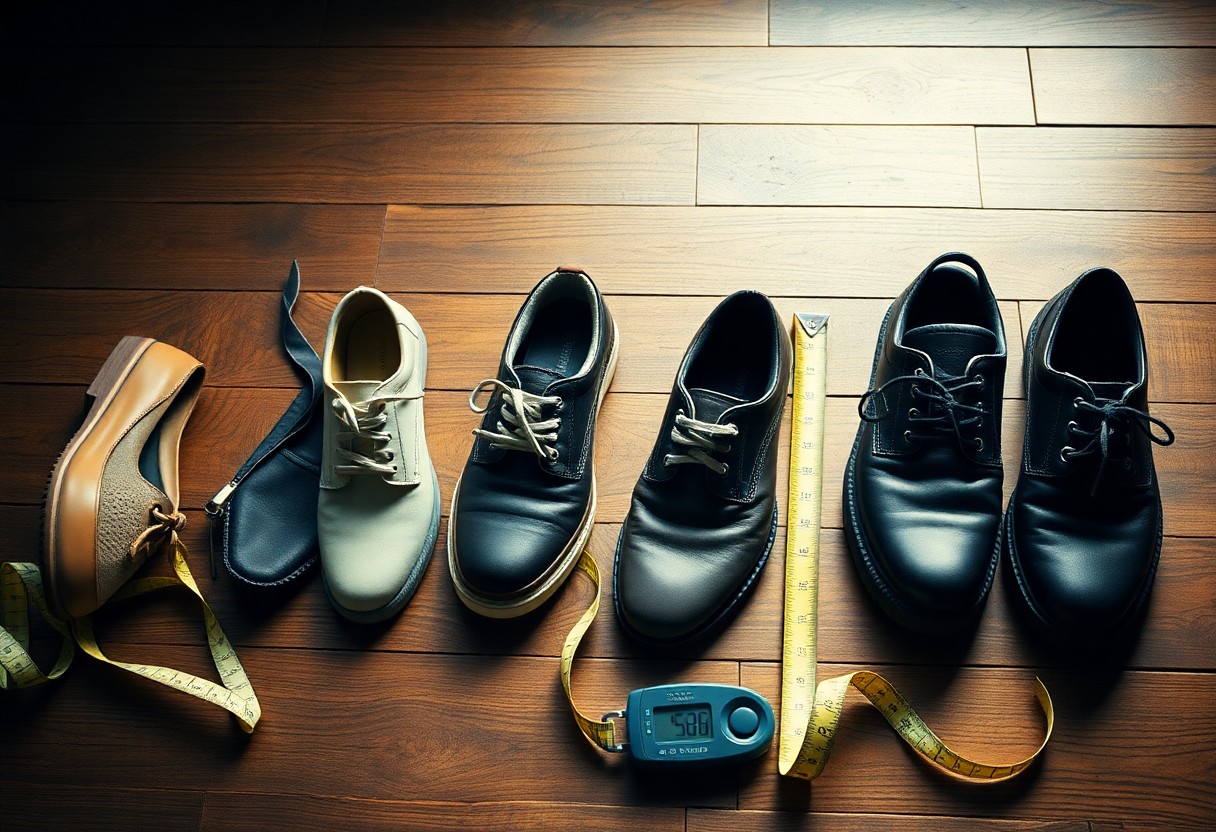
Comprehensive Understanding of Shoe Width Systems for Optimal Fit
Grasping the different shoe width systems is crucial for ensuring comfort and maintaining foot health. Various brands and countries utilize distinct measurement standards, so understanding these systems can help you choose footwear that fits well and aids in preventing foot complications. By recognizing how different widths are categorized, you can make informed choices while shopping for shoes that meet your specific foot requirements and promote overall foot health.
Interpreting Letter-Based Width Scales for Enhanced Shoe Fitting
While shopping for footwear, you will typically encounter widths labeled from AA to EE. For women, a standard medium width is B, while for men, it is D. Narrow widths span from AA to B, and wide widths extend from D to EE. This letter-based classification system is designed to help you pinpoint the ideal fit based on your foot shape, ensuring your shoes are both comfortable and supportive throughout your daily activities.
Global Shoe Width Measurement Standards and Their Relevance
When exploring the international shoe market, you may encounter various measurement systems. For instance, European sizes are quantified in millimeters, while UK sizes have their own width standards. Your US shoe size might differ from international sizes by one to two width sizes, underscoring the importance of always checking the brand’s size chart when purchasing shoes from overseas. Japanese brands typically run narrower, while European brands often feature a more spacious toe box. To achieve the best fit, measuring your feet in millimeters can provide the most accurate reference when making international purchases, leading to better overall comfort.
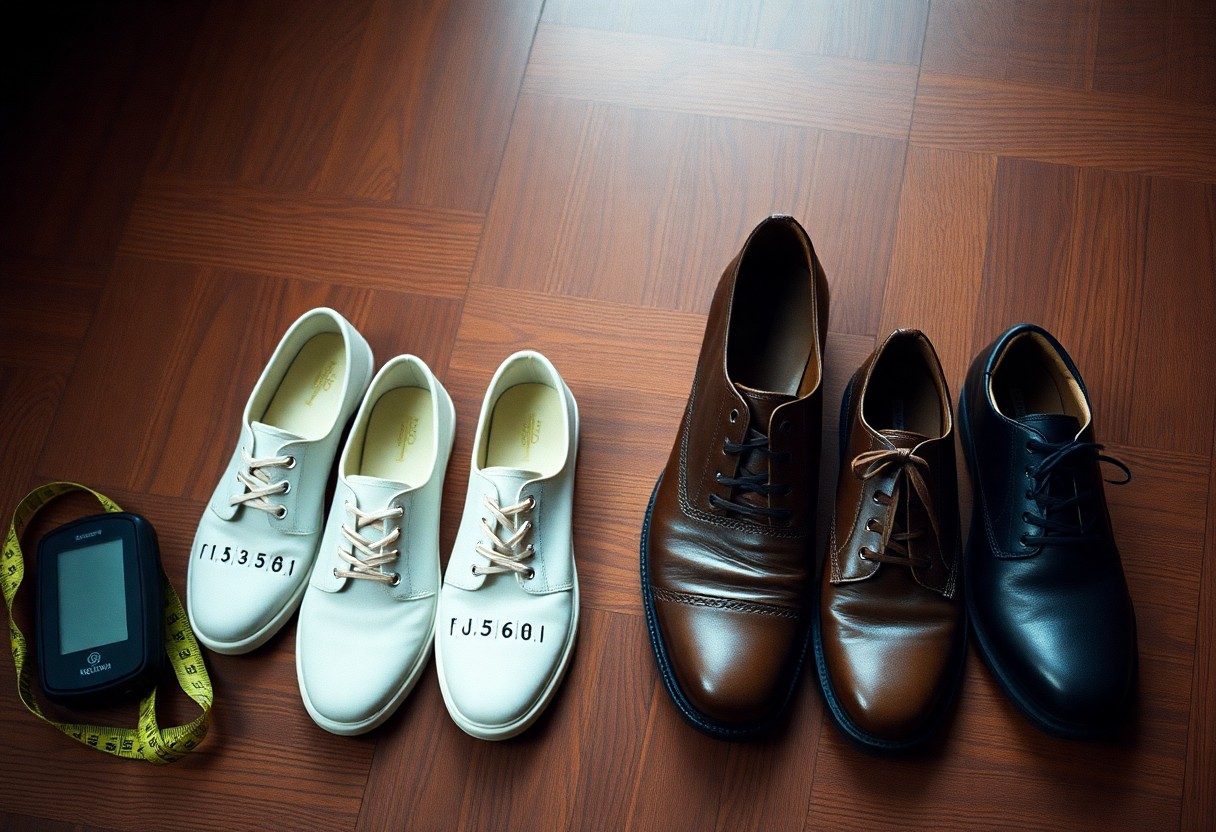
The Role of Shoe Construction in Fit and Comfort
Understanding the construction of shoes is essential for making the best choices for your feet. The design and build quality of a shoe significantly impact how it fits and feels when worn. Your comfort level is greatly influenced by how the upper part of the shoe connects to the sole and the flexibility of the materials around the widest part of your foot. By selecting shoes that boast thoughtful construction, you can enhance your overall comfort and support, ensuring your feet feel their best during daily activities, whether you’re walking, running, or standing for extended periods.
Benefits of Opting for Natural Materials in Footwear
Shoes made from genuine leather are known for their exceptional breathability and adaptability. Leather possesses a natural ability to stretch and conform to the shape of your foot over time, resulting in a personalized fit that enhances comfort. Research indicates that leather shoes can expand by as much as 30% of their original width, making them an ideal choice for individuals with varying foot widths who seek comfort and flexibility in their footwear.
Durability and Consistency Offered by Modern Synthetic Shoe Materials
Modern synthetic materials provide consistent width measurements and remarkable durability. These innovative materials not only protect your feet but also offer water resistance and improved breathability. Many contemporary synthetic footwear options now incorporate mesh panels that promote airflow and flexibility. Furthermore, advancements in synthetic materials have introduced comfort features such as memory foam and gel inserts. As a result, shoes can now combine stable width measurements with targeted cushioning, delivering exceptional support during wear. Recent studies show that synthetic materials can maintain their shape up to 40% longer than traditional materials, ensuring your shoes retain their proper width throughout their lifespan.
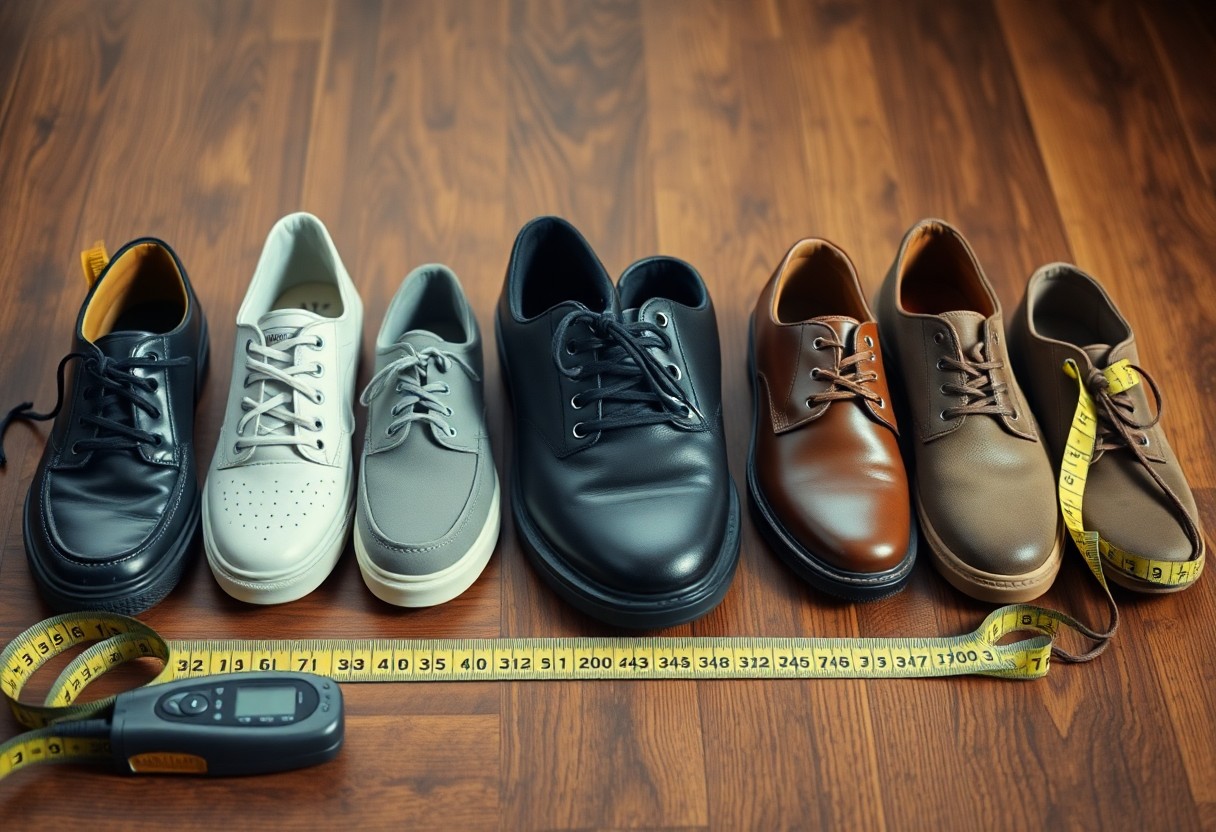
Identifying Signs of Proper Shoe Width for Ultimate Comfort
Unlike shoe length, appropriate shoe width is often reflected in how your feet feel while wearing them. Your footwear should allow your toes to spread naturally when walking, with approximately half an inch of space at the shoe’s widest part. Research suggests that 70% of individuals wear shoes that do not fit correctly in width, leading to a variety of foot problems. Being able to recognize the signs of proper width can significantly enhance your shoe selection process, allowing you to make better choices for your foot health.
Key Indicators of Comfort from Proper Shoe Width
Here are several key indicators that suggest your shoes fit correctly in width: your toes should be able to wiggle freely, the ball of your foot should align with the widest part of the shoe, and you shouldn’t feel any pinching on the sides. A well-fitting shoe accommodates your feet as they expand naturally throughout the day, as feet can swell by up to 8% by day’s end. Recognizing these signs helps ensure that you choose shoes that promote comfort and prevent long-term foot issues.
Red Flags Indicating Incorrect Shoe Width
While wearing shoes, it’s crucial to be aware of warning signs such as numbness or tingling in your toes, blisters on the sides of your feet, and pressure marks on your skin upon removing your shoes. These symptoms suggest that your footwear may be either too narrow or too wide. Proper width is essential for maintaining foot health, as studies indicate that ill-fitting shoes can lead to chronic foot problems. You should not experience any pressure points while standing or walking; if you notice pain, redness, or if your foot spills over the edges of the shoe, it’s time to explore other width options for your comfort.
Understanding Width Variations Across Different Shoe Brands
Numerous shoe manufacturers offer a spectrum of width options, ranging from AA (super narrow) to 4E (extra wide). It’s vital to understand that foot width can vary throughout the day, with studies revealing that up to 70% of individuals have different widths between their left and right foot. Recognizing these variations will empower you to select footwear that accommodates your specific foot shape, thereby helping to avert discomfort and potential foot complications associated with improper fitting.
How Brand Differences Affect Shoe Width Measurements
When comparing various brands, you may encounter substantial differences in width measurements. A medium width in one brand could feel narrower in another. European brands often have narrower fits compared to American brands, while athletic footwear brands typically provide the widest array of options. It’s always wise to try on shoes before finalizing a purchase, as sizes can vary significantly across manufacturers, ensuring you select footwear that offers the best fit for your unique foot shape.
The Importance of Shoe Style in Width Fitting
The style of a shoe greatly influences how well it accommodates your foot width. Athletic shoes generally provide more flexibility in width compared to dress shoes, while sandals are designed to fit a more natural width. Your foot width needs may vary depending on the shoe’s intended use and the activities you plan to engage in. Additional analysis reveals that different styles require specific width considerations. For instance, high heels necessitate a secure fit to prevent slipping, while work boots may need extra width to comfortably fit thicker socks. Running shoes should ideally allow for around half an inch of space between your longest toe and the shoe’s tip for optimal comfort and performance.
Recognizing Special Width Needs for Unique Foot Characteristics
While standard sizing options are widely available, some individuals may require specialized width accommodations. If you suffer from conditions such as bunions, flat feet, or swelling, wider shoes may be essential for your comfort. Additionally, your foot width can change during the day, with studies indicating a potential 4% increase in foot volume by evening. Being mindful of these fluctuations is critical for selecting shoes that remain comfortable throughout your daily routine, enhancing your overall foot health and comfort.
Medical Conditions That Necessitate Special Width Accommodations
Specific width requirements often arise from medical conditions. For those with diabetes, arthritis, or edema, wearing shoes with extra width allowance is vital for promoting healthy circulation. Healthcare providers frequently recommend precise width measurements to mitigate complications associated with these health concerns. Studies show that 75% of individuals with foot conditions benefit from specialized width fittings, underscoring the importance of proper footwear in supporting foot health and preventing further issues.
Activity-Specific Width Requirements for Enhanced Performance
Leading an active lifestyle requires different shoe widths tailored for various activities. For example, your running shoes may need to be wider than your casual footwear, while hiking boots should allow for additional space to accommodate thicker socks. Athletes typically benefit from shoes that are half a size to a full size wider for high-impact sports, accommodating natural foot expansion during performance. When considering activity-specific fitting, it’s essential to factor in your foot’s natural movement patterns. During running, your feet can spread up to half a size wider. For sports involving lateral movements, such as tennis or basketball, ensuring adequate width is crucial to prevent foot strain and potential injuries. Your footwear choices should align with your activity level and unique foot characteristics to promote comfort and performance.
Finding Your Ideal Shoe Width for Long-Lasting Comfort
Discovering your ideal shoe width involves understanding proper measurement techniques and the available width options. By measuring your feet at their widest point, identifying your width category (which ranges from A to E), and selecting shoes that align with your measurements, you can ensure lasting comfort. Your footwear should fit snugly without causing pinching or sliding, allowing your toes the freedom to move naturally. By opting for the right width and selecting suitable materials for your feet, you can enjoy comfortable, well-fitted shoes that support your daily lifestyle and activities.
Frequently Asked Questions About Shoe Width
Q: What is the best method to measure my foot width at home?
A: To measure your foot width at home accurately, place your foot on a blank sheet of paper and trace its outline. Measure the width at the broadest point, typically at the ball of your foot, using a ruler. It’s advisable to take measurements in the afternoon when your feet are at their largest. Be sure to measure both feet, as it’s common for one foot to be wider than the other. Use these measurements to compare with shoe width charts provided by the manufacturers for optimal fitting.
Q: What are the standard width measurements for shoes?
A: Shoe widths generally utilize letter codes from A to E. For women, the standard medium width is B, while for men, it’s D. Narrow widths are indicated by A and AA, whereas C and D signify medium-wide for women. E and EE are labels for wide widths. Remember that each brand may have slight variations in their width measurements, so it’s wise to check their specific size charts prior to making a purchase to ensure a proper fit.
Q: How can I determine if my current shoes are the wrong width?
A: Look for indicators such as red marks on the sides of your feet, numbness in your toes, blisters on your heels or sides, and shoes that slip off while walking. Your toes should have ample space to wiggle freely, and the ball of your foot should fit comfortably at the shoe’s widest part. If you feel pressure on the sides, it may be time to consider a wider shoe. Conversely, if your foot moves side-to-side, you might need a narrower width to ensure comfort.
The Article How to choose the right shoe width tips for a comfortable fit appeared first on My Shoes Finder
The Article Choosing the Right Shoe Width for Ultimate Comfort Was Found On https://limitsofstrategy.com
References:
Choosing the Right Shoe Width for Ultimate Comfort
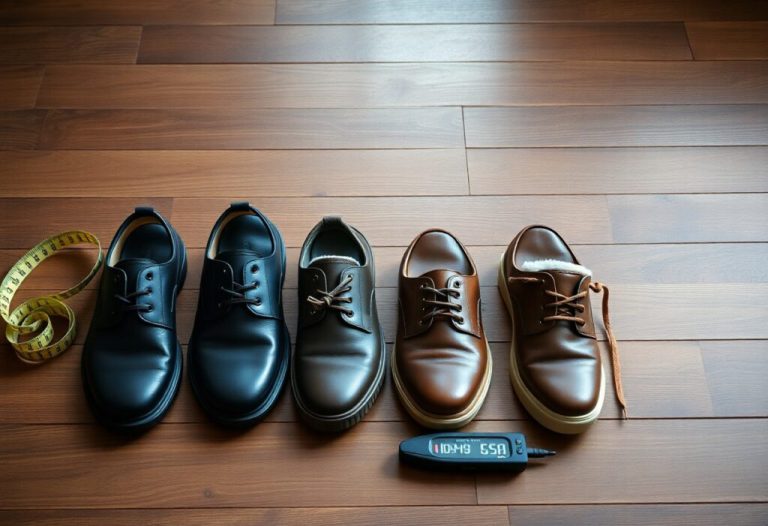



I totally agree with your points about the importance of shoe width! I used to ignore it entirely, focusing only on length, but that really backfired. I remember a couple of years ago when I bought a pair of trendy shoes without checking the width. They looked great, but they were super uncomfortable and led to blisters after just a few hours. It’s a painful lesson that fitting shoes right shouldn’t be sacrificed for style.
It’s really surprising how easily we can overlook the width of our shoes, especially with all the emphasis on style in today’s fashion landscape. Your experience is a common one; many of us have chased trends without considering how a shoe feels after a few hours of wear.
I completely relate to your experience. It’s all too easy to get caught up in the aesthetics of footwear, especially when there’s so much pressure to keep up with trends. That moment when you realize that a stylish shoe can be a recipe for discomfort is frustrating, and unfortunately, many of us learn that lesson the hard way.
It’s interesting how footwear can tell so much about our priorities and what we think we should be focusing on. You mentioned the pressure to keep up with trends, and that’s something I think we all navigate daily. The fashion industry has a knack for presenting trends that look appealing but can sometimes feel miles away from practicality. With social media constantly showcasing the latest styles, it’s easy to be lured into the idea that we need to wear something that looks good rather than something that fits well or supports our feet.
You make a great point about the tug-of-war between style and comfort. It’s striking how often we let the allure of trendy designs overshadow practicality. I remember the excitement of purchasing a pair of shoes that everyone was raving about, only to have them sit in my closet after one outing because my feet were begging for mercy.
I really appreciate your emphasis on the importance of selecting shoes with the correct width—it’s such a crucial yet often overlooked aspect of footwear shopping. Personally, I’ve found that the difference between a shoe that feels “just okay” and one that truly fits like a glove can largely stem from width rather than length. I used to believe that shoes were supposed to stretch out over time, but after enduring endless discomfort from shoes that didn’t fit well, I learned my lesson the hard way.
You’ve raised some important points about the significance of selecting shoes with the appropriate width, which is often overlooked in the shoe-shopping process. I find it fascinating how a seemingly simple choice like shoe width can have such profound implications on our overall foot health and comfort.
You’ve touched on a key aspect that often gets sidelined. It’s interesting how shoes can seem so simple, yet the right fit in width really can change everything. I remember when I finally paid attention to this—I thought I was just dealing with sore spots. Little did I know, a wider shoe made all the difference in my comfort levels throughout the day.